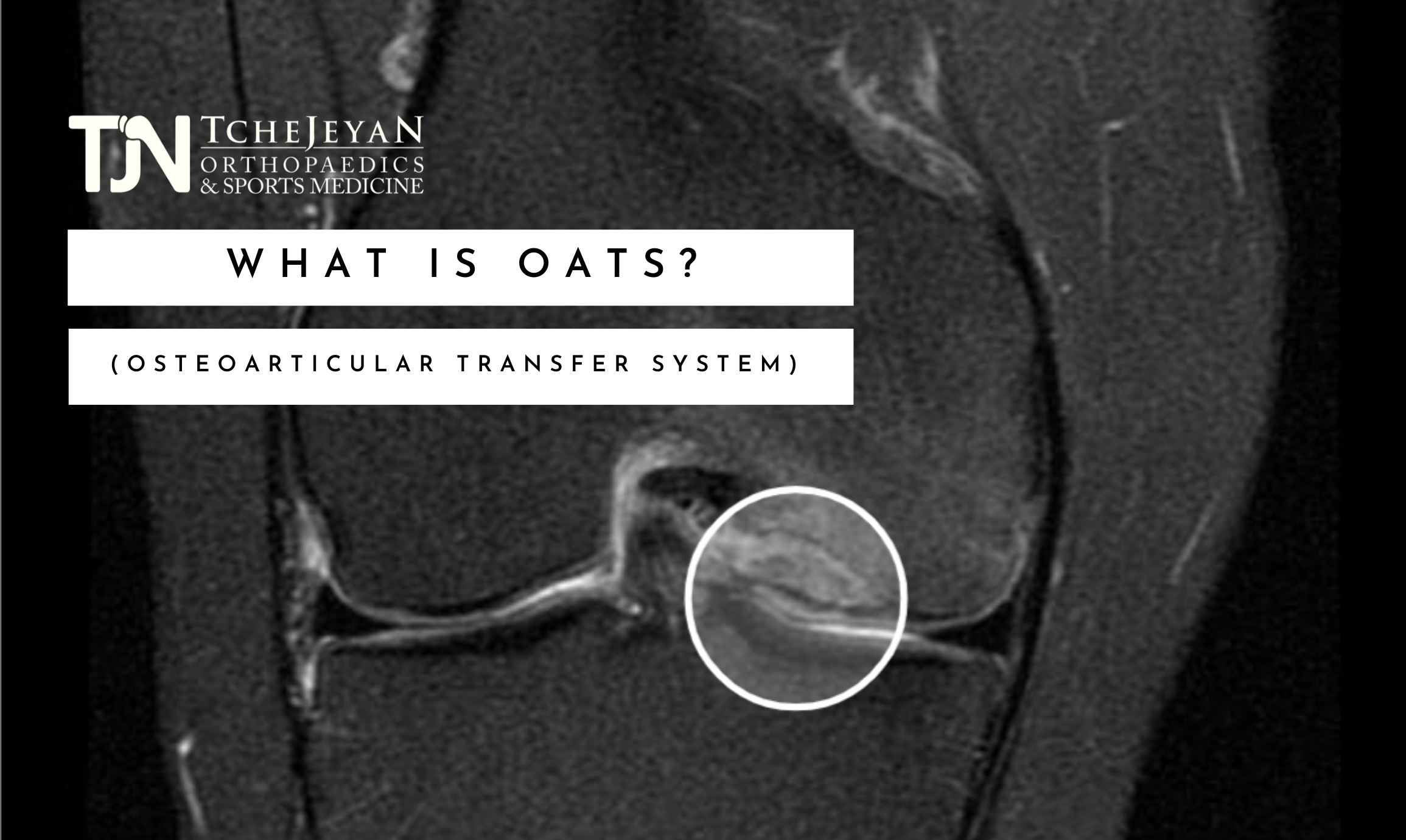An Osteoarticular Transfer System procedure is simply a type of cartilage transplant surgery. When it comes to joint surgeries, orthopedic surgeons have several options to help a patient heal or repair injuries caused by birth defects or trauma. Generally, if damage to the joint is isolated to a specific area, a procedure like OATS is a viable option. Dr. Gregory H. Tchejeyan commonly performs this procedure on his patients, especially in the area of the knee.
Why OATS?
The knee has a large articular surface of the bone. This bone can be relatively normal, or it can have areas of damage either from birth (anatomical damage/softness) or from trauma (injury) to the area.
In situations where the surface cartilage is damaged but the rest of the area is normal, treatment doesn’t always require a Knee Replacement. Instead, with normal ligaments, meniscus, and cartilage, only a portion of the surface needs repair. Surgeons often liken the situation to freshly paved asphalt with one pothole. The most appropriate solution is to simply fix the pothole – or damaged portion of the area, rather than “re-pave” the entire thing unnecessarily.
Who Is a Candidate For OATS?
Patients who have some sort of defect on only a portion of the knee have three main options for treatment
- For small defects or MICROFRACTURES (less than a centimeter or so) – the surgeon will drill holes into the bone, through to the bone marrow, bringing healing factors into the region. In this procedure, the fibrous cartilage fills in the defect. This may not be the same articular cartilage, but it serves as a barrier nonetheless. Since small areas usually don’t create extreme issues for people, a minor procedure like this can be an effective solution.
- Another successful option for cartilage repair is AUTOLOGOUS CARTILAGE IMPLANTATION (ACI). With ACI, the surgeon first performs a diagnostic arthroscopy to see the defect, then harvests cartilage cells in order to grow new cartilage cells in a petri dish. After a certain period of time, the surgeon is able to obtain these cells and implant them into the knee with a fibrous matrix that attaches to the surface. This type of repair requires a waiting period, but still allows the patient to make use of their own cells.
- Lastly, and perhaps the most common treatment of all, is called an OSTEOARTICULAR TRANSFER SYSTEM, or “OATS”. To help his patients understand the process, Dr. Tchejeyan compares this procedure to a hair transplant. OATS is usually reserved for damaged surfaces larger than 10 mm – the surgeon will identify healthy cartilage and bone from non-essential/non-weight bearing surfaces of the knee, take a plug from them, and transfer that to the area with the defect.
This procedure has several steps. First, the surgeon drills away the damaged area on the surface of the bone to create a socket up to one inch deep. Think about this part like digging a post hole for a post. Then the surgeon takes a plug (like a “dowel” of cartilage and bone) from the edge of the knee. (This non-weight-bearing, non-essential area provides healthy cartilage for transplant.) Taking cartilage from one’s own knee is called an autograft. If it’s coming from a donor, it’s called an allograft, and these cells are kept alive for use within a matter of weeks.
In either case, the surgeon places that plug of cartilage into the socket. These grafts are created to be 1 mm larger than the hole that was created, so that it can be oriented properly and held in place. Then it is smoothed over on the surface, and the repair is made! These OATS procedures are relatively common, and the cartilage integrates well into the bone. Dr. Tchejeyan has even re-scoped many patients after this procedure, and one can hardly tell the osteoarticular transplant was performed.
An OATS Success Story
One of Dr. Tchejeyan’s recent patients was a young, healthy 35 year old who came to TJN Ortho for a second opinion. Having been born with a minor deformity on his knee, he was told he needed a partial knee replacement, but didn’t want to settle for an artificial solution. He was expecting his newborn child within weeks, and wanted to be healthy without any physical limitations such as running. Dr. Tchejeyan ended up performing an OATS procedure with an allograft and the patient healed quickly as can be! He was pain free and ready to remain active to raise his young son.
For the right indication, OATS is an isolated procedure that helps younger, athletic people avoid joint replacement allowing them to remain active with zero restrictions and any chance for implant failure or future revision.
This is Dr. Tcehjeyan’s passion – finding the least invasive solutions for his patients – even if it doesn’t mean surgery. With over 10,000 surgeries under his belt, you’re in good hands with Dr. T. Have you scheduled an orthopedic consultation? Call or email our office! We look forward to serving you!

